
There’s this big chunk of mountain that comes crashing down to the river some 540 million years ago. It gets broken up into smaller pieces and then eventually is ground down to a bunch of smaller stones that get buried in the gravel bars of the rushing river.
As they roll downstream, they contact other similar rocks in the river and, just like it happens in a lapidary “tumbler” device, the stones grind and polish one another.
The process can be sped up in a lapidary workshop, merely by adding some grinding abrasive compound — it’s a simple cutting powder that you’d put into the water in the rock-tumbler.
The rocks in the tumbler go ’round and ’round, grinding against each other, sometimes for months, but it’s a LOT faster than the river method.
If you were to produce the ringstones and brooch stones that I offer in my rock shop, and you had to glue a dop stick to the back of the stone and hit it with a diamond cutting wheel, and then shape it, form it and polish it, that would be the work of several days.
All I have to to is hop into the car and drive 55 miles away to a landscaping yard where they have enormous bags and heaps of rocks, and select the ones I want, get them weighed and priced out, pay the invoice, load the rocks into the trunk and drive back home, another hour’s drive.
In all, I spend about an hour to an hour and a half choosing the rocks that I want to get. We’re pretty friendly with the landcape arts people, and they help us quite a lot to get loaded — in the freighting sense of the word — and they often have suggestions about rocks that they’ve just gotten in.

The rocks do vary in size, shape, quality and quantity. It’s all very seasonal. You can’t roll trucks in the mud, and nobody buys anything in the summer.
That’s not entirely true, but it sure seems true when you’re trying to sell things in the summertime.
So at the end of the day, I have something on the order of a few hundred rocks to paint, some of which are going to work for me, and some are emphatically not.
The ones that are not easy for me to work on, I toss gently into a “FREE ROCKS” box — the boxes that come from the health food store work perfectly and, like their contents, they are gluten-free.
That’s excellent, because there’s no way I’m going to pay extra for gluten, and please note that the word “gluten” has at least a hint of being somehow related to the word “glue”.
If they are related in more than the sound sense, I’m glad it’s free, because it certainly isn’t worth paying for.
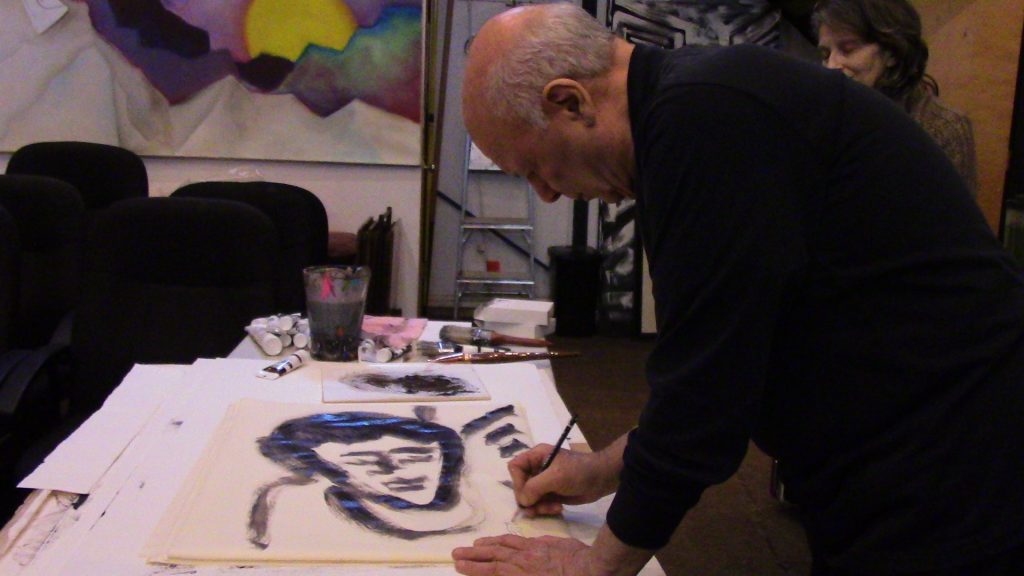
Now that I have this giant mound of odd-shaped and oddly similar rocks before me, it’s time to sort them into some more boxes, and I’ll be only too happy to tell you how to split them up into workable groups.
- DISCARDS — These are rocks that are too grainy, have too many holes or cracks or crevices for you to comfortably paint on. This box goes to the shop and these are your FREEBIES, your giveaways. All other blank rocks they have to pay for.
- STUDENT GRADE — These are rocks that are okay to paint on, but aren’t the Hope Diamond or the Pink Panther. They are typically rather smooth, and they sport a rather odd shape, or some sort of texture that doesn’t interfere with the design.
- EMINENTLY PAINTABLE — This box contains those stones that would be easy to paint and that have really nice shapes, but they aren’t your prime stones.
- ROUNDS — These are perfectly or almost perfectly round stones, flattened top and bottom. You will also on occasion come across a BALL. This is unusual enough that you won’t want to sell it cheap, or at all. Think of the odds against Mother Nature making that perfect ball. That’s what you call LUCKY.
- CAMEO or CABOCHON — These are perfectly formed flattish low-domed ovals that fit easily into the standard 4×6 or 6×8 bezels, and may come in a wide variety of sizes, but all with the same “cab-cut” shape, an elongated oval, on which you might paint a cameo portrait of a person or a pet, or their house or a small landscape, perhaps, that would fit precisely into a sterling silver or 14k gold ring, pin or brooch. These natural cabochon-cuts should be treated the same as you’d treat a precious or semi-precious cab-cut — it’s all in the labor, not the stone, until you’re talking Tanzanite, Rubies, Emeralds, Sapphires and Diamonds, and they’re far too hard to paint.
- RARE & UNUSUAL — These are those occasional stunning and absolutely awesome — in the sense of colliding galaxies — river stones that have been formed by nature into textured stones, some with inclusions, some with odd colorations, and some that defy explanation and must be seen to be appreciated. Pricing these stones can be tough, but the general rule is to get for them about half of what you’d get if you painted them, or don’t sell them unfinished at all.
You might develop other classifications as you go along, but those are the main categories you’ll encounter in your rock searches.
You should treat a rock search as seriously as a coin search. There are literally gemstones to be found amongst the seemingly similar river rocks.
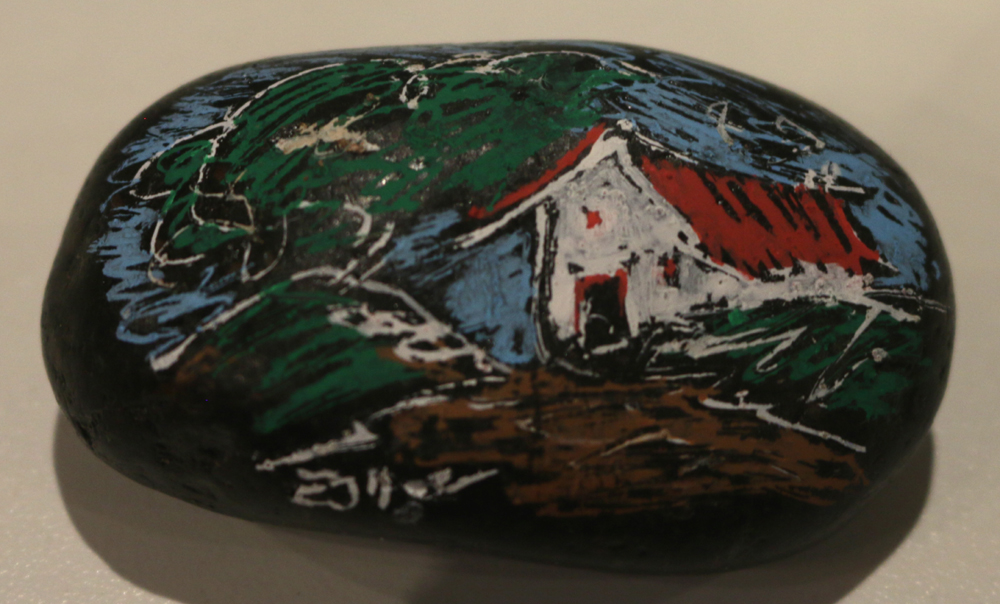
They are emphatically NOT similar, and that’s the first thing you’ll notice as you search them.
Keep in mind that ordinarily these stones would never be examined, let alone closely examined — they generally get dumped on a driveway or into a man-made stream on someone’s landscaped property.
They’re sold typically as landscaping supplies, and they end up in a pile somewhere, and eventually roll down into another stream or river, given a few million years to accomplish that mission.
When you search those rocks, you’re changing their fate, at least temporarily, and giving them a new and different life as a piece of jewelry or home or office decor.
Think of it — you’re taking ordinary rocks and transforming them into things of value, things that have a use and that have a very different foundational life than that of an ordinary rock.
You have made that rock into a Rock Star.
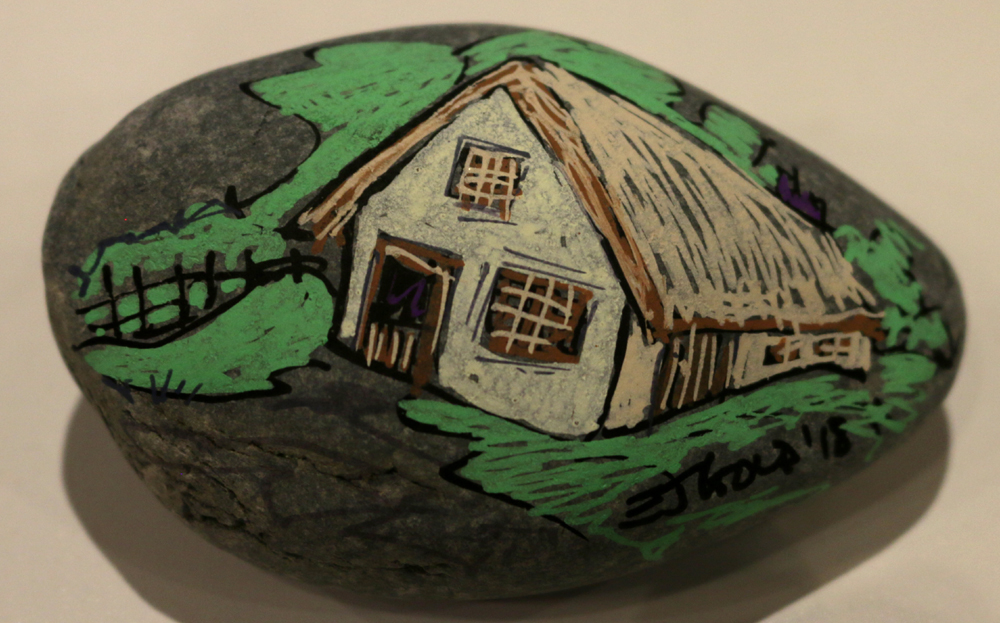
Of course, the payoffs are a little different from that of the entertainment industry, and the benefits don’t include a limousine, a heated pool and a ten-person hot-tub, but the general effect is the same.
You don’t actually have to BE rich to FEEL rich, and many rich people don’t feel rich at all — they’re sitting there in the dark with a shotgun across their knees waiting for someone to come along and try to take it from them.
They don’t get the Gorby Award for Good Thinking.
The paint we’re using for the rock painting project is Posca Paint, which comes in various-sized sticks or tubes.
It’s non-toxic, kid-safe and fast-drying, and is permanent on porous surfaces, which will be most of your greyish river rocks and a few lighter ones.
Quartz doesn’t make a good painting surface for Posca, but you might consider a bit of varnish on the top to bring out any texture qualities that are visible already, but could use a bit more definition and clarity.
In short, if it’s a boring piece of rock, it will not improve with varnish.
I use a non-toxic water-soluble varnish, and tell you all about it in my instructional videos on the subject of rock painting.
If you’re serious, you’ll get all the information you need to do the job.
Keep in mind that I have gone to extra trouble to make sure that everything in this rock painting kit is water-soluble, non-toxic and requires no cleanup.
That means no rags, no water and no messy spills, an absolute necessity when dealing with the gallery, which has that beautiful floor to protect.
You now have the opportunity to create completely unique original works of art on ring, pin and brooch stones.
Anyone can cut a piece of quartz gold into a cab cut. Take a look at several cab-cut quartz gold cabochon cuts and you’ll see what I mean — the fact is that, apart from a hard-to-see difference in the pattern of the gold inclusions within the quartz, there is no easy way to see the exact uniqueness in each of the quartz gold stones.
You’ve seen one, you’ve seen ’em all.
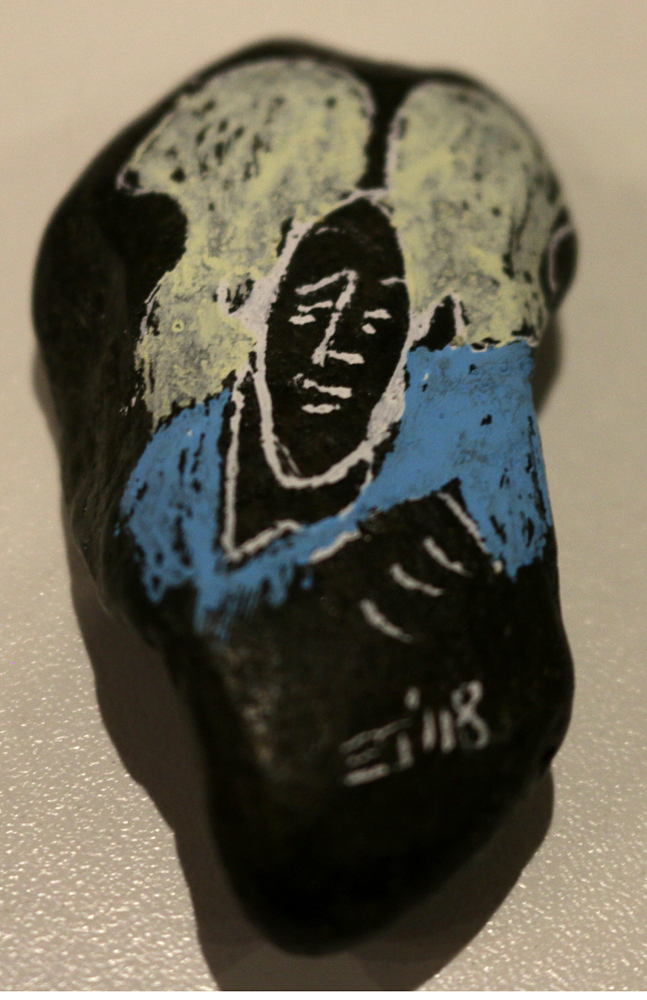
Okay, that’s not quite true — there are some stunning examples out there, and there are exceptions to every rule, I accept that, but in general, they all look pretty much alike.
The thing is, it’s not the actuality, it’s the perception. You paint a unique and original work of art onto a cabochon cut stone, and it’s a one-of-a-kind, which is what you’re trying to achieve here in this case.
Actually, all of your freehand drawings and paintings count as originals, even if you do a series of them, all similar — they will never be exactly the same, and you can do things to make them visibly different from each other.
You can move your painted rocks in a variety of ways — some can be sold as expensive jewelry, perhaps, although that is a tough market, which depends entirely on the company you keep.
If you meet a lot of billionaires, you’re bored with their pedestrian conservative taste, and you’ll never get through that blustering defense mechanism to show anything really artistic.
For those with a sense of purpose, you might consider giving away those rocks that aren’t particularly saleable — there is a very small market for desk-sized paperweights.
I’d ask any donation they want to give. You’ll often be surprised both up and down. Some folks give a lot for something you consider almost worthless, and others will take a ten-hour rock home for a quarter, or in some cases, for nothing, and I’m not talking about homeless people — these are well to do folks who are clearly upwardly mobile, but they’re just plain stingy and inconsiderate.
My plan includes them, and you’re just as cheerful and friendly when they give nothing as when they give a $20 bill for a river rock with a few daubs of paint on it.
When giving a rock to someone homeless or bad off, it’s not about money. Just give the rock, knowing that they’d really rather have the cash.
Sure, they can sell the rock for a buck, but so can you — don’t use painted rocks to save the world.
Well, maybe I’m a bit too hasty there. Painted rocks could, indeed, be used to save the world.
Rocks that arrive on your workbench in cabochon cut condition certainly warrant a “Lucky Strike” moment when you decide what you’re going to paint onto its smooth, perfectly formed, naturally polished surface.
When working with miniatures, never forget that people are always more willing to pay for large paintings than for small.
You have to think of the product as jewelry, not fine art, in order to realize the value in a retail sale. Think jewelry.
When you’re sorting rocks, you’re primarily looking for jewelry grade stones, some of which will fit into a ring mounting, and the larger rocks might work well with a glue-gunned pin-back on it.
Pins, brooches and rings make up the larger part of the selection of available blank jewelry-grade ring and brooch stones at the gallery.
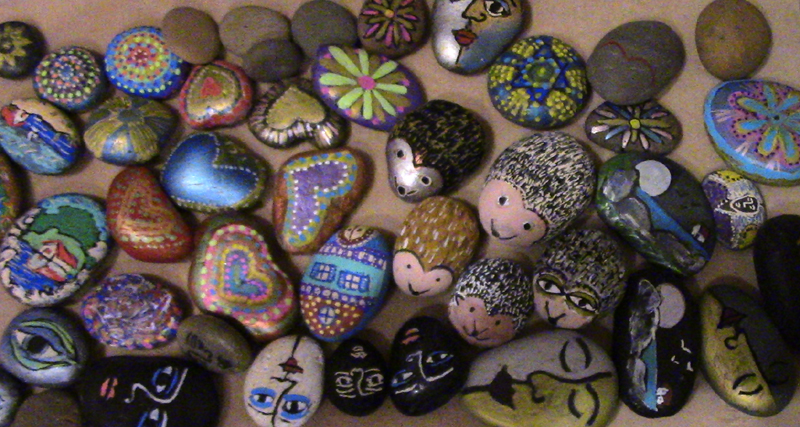
They run from $2 apiece for the free-form shapes, up to $10 each for the oval cabochon cut ringstones.
All the Natural Cab-Cut stones are ordinary river-rock. There is nothing precious about them, other than the paintings that YOU will put upon them, to make them even more valuable than they are as Evidence of Luck.
Again, I remind you that these stones are pretty much statistically improbable, yet here they are to tell the tale.
As a symbol of Luck Power, they are impressive, and even more so if you know their geological story.
Millions of years ago, your River Rock Gemstone started as a sharp chunk of broken rock, and just look at it now, in that gleaming gold or silver setting!
And every ring stone you paint is an original work of art.
You don’t even have to put the ring and stone together. You can sell the stone and have someone else do the ring and mounting, then deliver it to your customer as if you’d made it yourself.
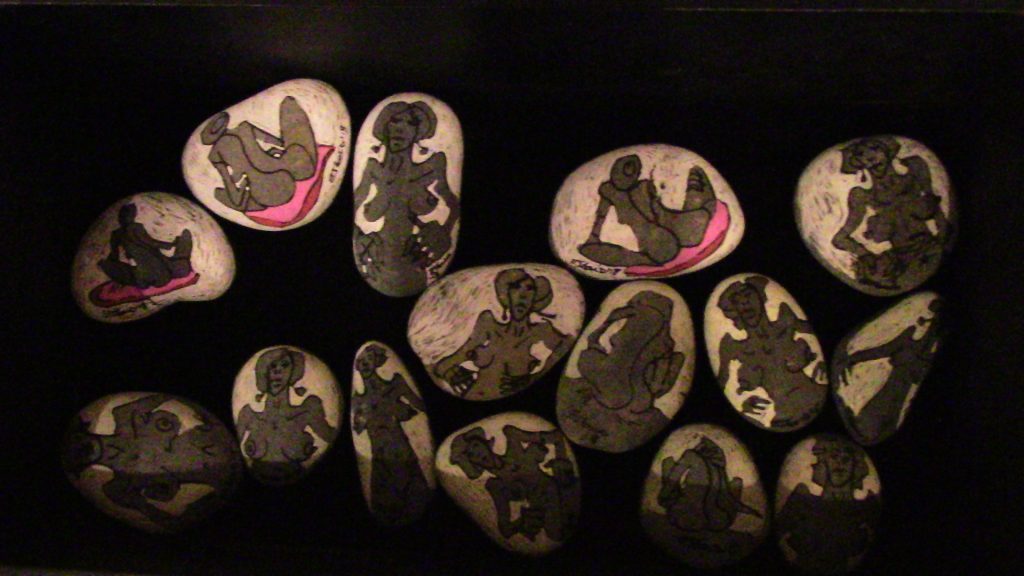
A surprising number of jewelers do just that — they draw the ring design and a mechanic does the sweat-work.
Of course, there’s always that cash-or-labor tradeoff to consider. If you make it yourself, it might be cheaper in money, but it will cost you time and energy.
It’s the same with the Natural River Rock Gemstone. You can make it in a few hours in a lapidary studio, or wait millions and millions of years for nature to grind the stone and polish it into that particular shape.
Keep in mind that these natural cabochon cuts are the equivalent of a deliberately cut and polished ring-stone, yet no hand has touched it since the beginning of time.
Gee, I like that phrase — “No Hand Has Touched It Since the Beginning of Time”. Maybe use it on the world-wide publicity we’ll never do on the subject???
Then along with all the lucky stuff and the uniqueness of the painted ringstone, there’s another factor — the occult power of the painted stone.
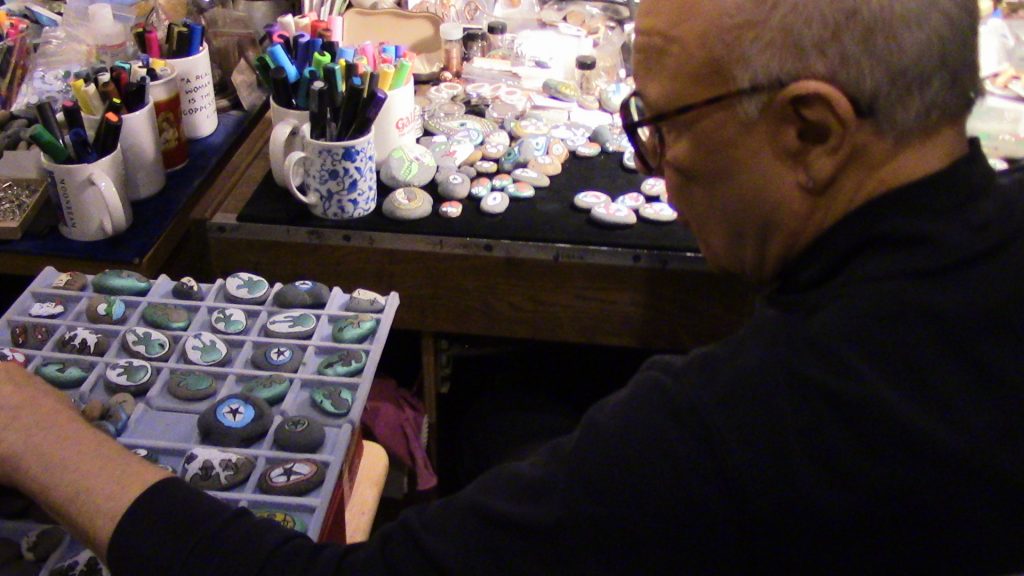
For instance, I have several Healing Stones, one of which is the Power Pentacle, a small pentangle drawn within a circular cartouche, leaving the natural stone textures to show behind the metallic gold painted surface.
I have made Power Pentacles in a variety of sizes, shapes and rock varieties, and they cost a mere $5 wholesale for most of them, except for the smaller Perfect Cab Ringstones, which are $10 apiece.
My Perfect Cab Ringstones are generally not for sale — you can commission a miniature painting on one of them, which I’ll have mounted into a 14k gold ring, but I don’t sell the Perfects as blanks.
You can, of course, find your own river rocks somewhere. Perhaps there’s a landscape yard nearby, in your hometown.
If not, you might want to buy some of my natural river rocks that aren’t ring stones or brooch stones.
The other-than-ringstones rocks will vary somewhat in price, but generally run around a buck apiece, plus the shipping.
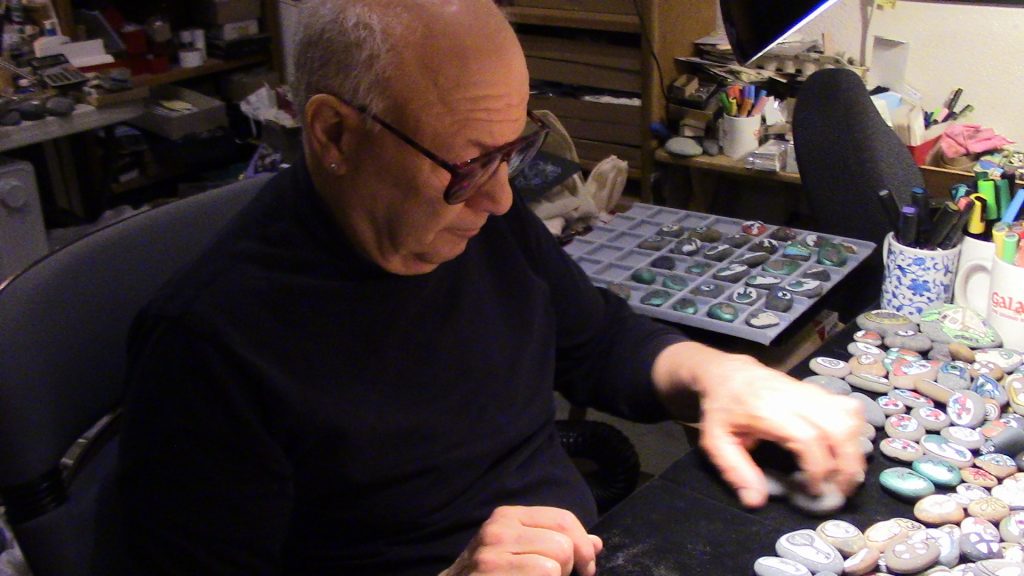
Larger rocks with flat paintable surfaces will run a couple of bucks each, up to $10 a pop for the exceptional larger stones, which are few and far-between.
If you don’t use a LOT of rocks, you’ll probably never encounter the better ones and, like all art projects, it’s not a matter of production — you’ll produce plenty of rocks for sale.
It’s all about how many a day you can sell, and that depends upon how many NEW faces you see each and every day.
It also depends on your nerve. Can you walk up to someone and show them a painted rock and have the guts to ask them for a donation?
It ain’t easy.
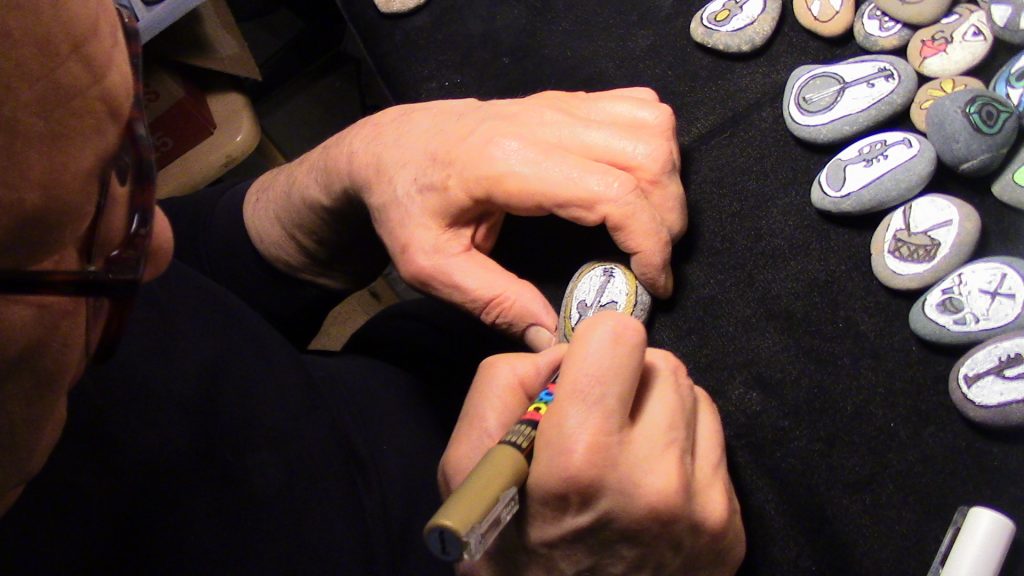
Too much like panhandling. So if your circuits are offended by panhandling or anything that even vaguely looks like panhandling, you might consider the fair booth route, or do as many artists are now doing — rent a small space within a larger gallery or boutique.
We have one place in town that charges $20 a square foot plus 50% of the gross for a space. Most artists in that shop pay around $80 to $100 for a showing space in the gallery.
It’s better than getting one gallery show every five or six years, which is the fate of most professional artists.
That is the story, and in order to change the outcome, we have to re-invent the gallery, and rock painting is the simplest way to do it.
At some point, someone might raise their heads above ground to take a look around, and they might notice the original Matisses, the Picassos, the Rembrandts and the Renoirs that are for sale, or they may take note of the many local artists we display.
In order to display all of them, we use print bins and a giant vertical print-flipper to show them.
Of course, this limits the presentations in the gallery to works on paper, with a few sculptures and 3-D artwork here and there.
Keep in mind that most people don’t consider art a necessity, and then look around at the total lack of packages — these people are walking, touring, not buying.
Rock painting is simple, straightforward, basic — “It’s just a rock, it’s just a rock, it’s just a rock, you assure them as they sit down to address the table full of rocks and painting supplies”.
It’s just a rock. It requires no explanation.

You either sit down and paint a rock or you don’t. There isn’t anything the gallery helper can say or do that will change that simple fact: Yes or no.
There isn’t any belief system to understand. It isn’t a big deal. There is no ego threat. It’s just a chance to sit down and relax a minute and paint a rock.
A free gift that you can give to someone.
It’s free, it’s easy and it requires no explanation. There’s no chance you will make them think, and with rock painting, you won’t have to.
You will be astonished at the reveal you get when you offer a free rock and free paint and a free painting lesson.
You won’t believe that there are so many people walking around with the same mental-emotional disorder.
“I can’t.”
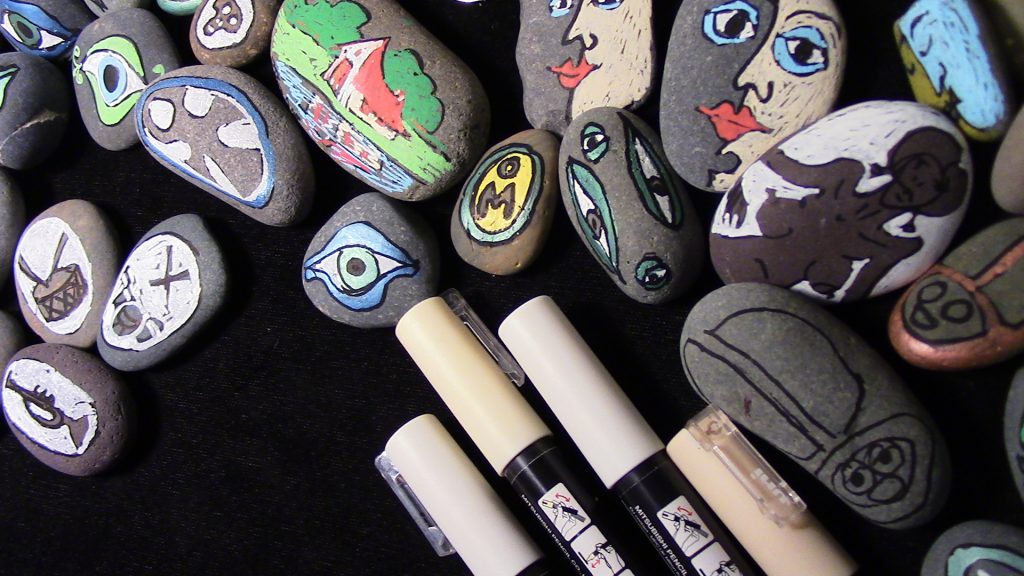
What they really mean is “I won’t”, but they wouldn’t be likely to say that sort of thing without real self-knowledge.
“Haven’t time” is a good one, something you’ll hear from someone you later see browsing the boulevard and strolling around munching some finger food they’ve picked up somewhere.
Don’t fret, no regret — this is not your customer.
You’ll see the emotions run the gamut all the way from Zombie Disinterest to High Frenzy of Excitement, when a couple approach the work table in the center of the gallery.
The seats are ready for them, the paint is out and ready to use, the rocks are labeled “FREE ROCKS” and you’ve charged the atmosphere by informing them that the paint is free to use and that they’re welcome to sit down and paint anything they want on the rocks and they can keep the rocks they paint or leave them for others to take home, in a sort of geo-cache way.
You’ll note flareups of temper when a couple is confronted with a crafty arts project that anyone can do, using no more skills than they exhibited in kindergarten.
In short, any excuse other than a real “I haven’t got the time”, is bullshit. Knowing that it’s bullshit helps you to help them to overcome their natural automatic resistance.
That resistance is a knee-jerk reaction to the unusual, something out of place or not in the routine, not on the ordinary cattle-path they take back to the barn.
Believe me, you don’t want to attract those folks. You can always tell that it’s one of them by their manner — it’s gruff and defensive, a result of being wary of strangers, which is not a bad idea these days.
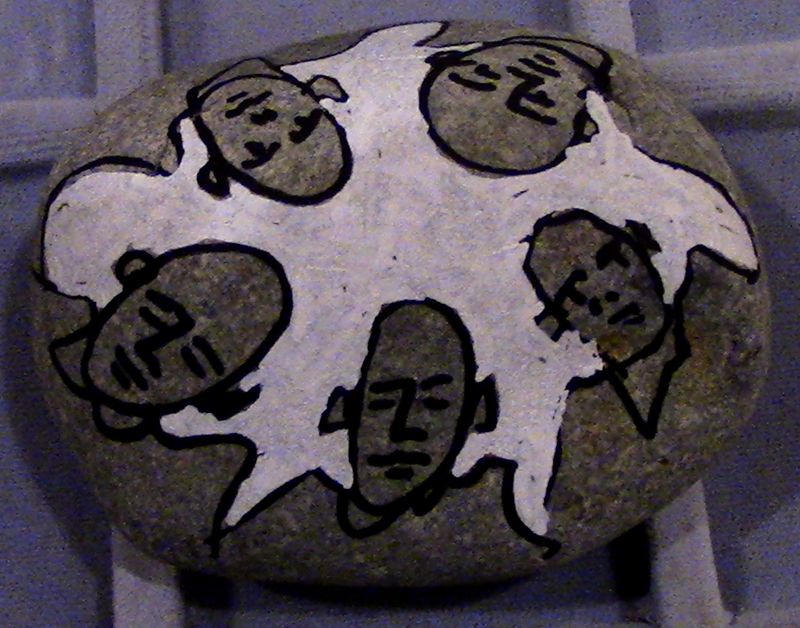
You can’t argue with that sort of defense mechanism, the one that nods and smiles with a fake mask face, lies and avoids and puts up defensive walls and barriers.
Even if you somehow convinced them that that should sit down and paint a rock, and they do actually paint a rock, it will come out badly — something will be wrong, something will generate a complaint.
Don’t give in to the Lonely Hearts Syndrome — only give the opportunity to paint a rock where it is WANTED, appreciated and gladly accepted.
Make the customer work a little to earn the invitation, and that includes niceness. Don’t cultivate the rude — it never pays off.
You’ll soon find the formula that works to get people to slow down, sit down and paint a rock and be happy with the result.
You might get a donation, maybe not. Some folks have paid for the free class and materials by buying some Zombie Family hot sauces or a card or two from the rack.
We’ve had a few painting sales in the hundreds of dollars, but nothing like the thousands we used to see back in the day, but be patient — there’s still time to move some great art.
I now have a combination of painted stones and unpainted blank stones for sale at the gallery — they’ll be there today for the Studio Tour, and then I’ll be pulling them back and selling them only as finished stones, so if you’re in the neighborhood today, drop in at the gallery and pick out some ringstones for yourself while the opportunity knocks.
My rave-fave for Power Pentacles is GNEISS, which in English is called “Granite”, a rough-surfaced very hard stone that incorporates crystalline quartz in the best cases.
Gneiss is by far the favorite amongst collectors of ancient stone beads. They are rare. I have a few 24,000 year old beads available for sale at $55 apiece, which was my cost exactly — I still have the 40 year old invoice, not sure why it’s still in my file drawer, but it leaves no question.
The source of those beads was Kate & Andy — they’re no longer in the bead biz, haven’t been doing beads for about 30 of those 40 years since I’ve seen them.
Think about what you’re doing when you paint a rock. It’s a process of transformation, some would say transsubstantiation, when you perform this Minor Miracle.
Wait a minute. Maybe it isn’t so minor.
The average Catholic priest transforms bread into the living flesh of the Lord, and the wine becomes the actual blood of Jesus, which the practitioner is expected to drink, in order to wash down the flesh of the wafer.
Let’s leave belief and faith out of this for the moment and just examine the act and the motivation for the act, which was born out of Medieval practices and ethics.
In short, you get the power of someone by eating their flesh and drinking their blood, and that’s presumably what’s going to happen when you take the Sacraments.
Okay, let’s say that IS what happens.
So you consume flesh and blood of your local Savior, and from that moment forward, you’re home-free, yet somehow, you’re still hungry, which you prove right after you get home from church by consuming an entire Dagwood sandwich and a pint of Smart Pop.
So what’s the payoff?
I can’t really say. Depends on you.
See You At The Top!!!
gorby

